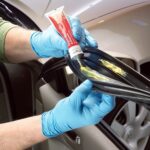When your car is repossessed, it’s a significant financial setback. Understanding your options to recover your vehicle is crucial. A common question arises: what happens if your car gets repoed twice? While the scenario of multiple repossessions on the same loan is rare, understanding the implications of repossession and your rights remains vital, especially if you face financial difficulties again after getting your car back once. This article clarifies what typically happens after a car repossession and how you can navigate your options.
Redeeming Your Repossessed Vehicle
In many places, after your car is repossessed, you have the option to “redeem” it. This means paying the full outstanding balance on your car loan. This isn’t just the missed payments; it’s the entire remaining amount of the loan, plus any repossession fees, storage costs, and potentially legal fees the lender has incurred. Redemption is essentially buying your car back, but at a cost that includes all the expenses the lender faced due to your default.
Reinstating Your Car Loan
Another potential avenue to regain your car is through “reinstatement.” Reinstatement allows you to catch up on your missed payments and reinstate your original loan agreement. To do this, you must make a lump-sum payment covering all overdue payments, along with any late fees and repossession expenses. However, reinstatement isn’t universally available. It depends on your state’s laws and the specifics of your car loan contract. Carefully review your loan agreement to see if reinstatement is an option for you.
Negotiating with Your Lender
If redemption and reinstatement aren’t feasible, it’s worth exploring negotiation with your lender. Contact your lender and explain your situation. They might be willing to work out an alternative arrangement. This could involve a partial reinstatement plan, where you pay a portion of the overdue amount and agree to a revised payment schedule. In some cases, lenders might even consider refinancing the loan if your financial situation has changed and you can demonstrate an ability to make future payments. Open communication is key to finding a mutually acceptable solution.
Bankruptcy as a Financial Tool
In more complex financial situations, bankruptcy might be considered. Filing for Chapter 7 or Chapter 13 bankruptcy can sometimes provide a way to get your repossessed car back. Bankruptcy can create an automatic stay, which temporarily halts repossession actions and might allow you to reorganize your debts, potentially including your car loan. However, using bankruptcy solely to recover a car is rarely advisable. It’s a significant financial decision with long-term implications and should only be considered after careful evaluation of your overall financial circumstances and consultation with a bankruptcy attorney.
Seeking Professional Guidance
Navigating car repossession and understanding your rights can be complex. For personalized advice regarding car repossession laws in your specific state, it’s recommended to consult with a local debt relief attorney. If you are considering bankruptcy, seeking counsel from a bankruptcy lawyer is crucial to understand the process and its potential impact on your financial future. They can provide expert guidance tailored to your unique situation.

